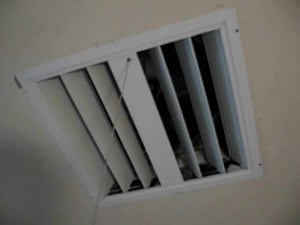 Chaney Electrical installs and services the electrical connections on gable mounted attic and whole house exhaust fans. We also hard-wire floor mounted attic – whole house exhaust fans that are placed on your attic floor just above the outside vents (seen on the outside of your home’s structure). Gable mounted fans are generally more expensive but last longer and require much less maintenance.
Chaney Electrical installs and services the electrical connections on gable mounted attic and whole house exhaust fans. We also hard-wire floor mounted attic – whole house exhaust fans that are placed on your attic floor just above the outside vents (seen on the outside of your home’s structure). Gable mounted fans are generally more expensive but last longer and require much less maintenance.
Floor mounted fans are the most common fan because some home owners can perform the work themselves Installation is usually not difficult and takes just a little construction skill and knowledge to complete. Because climbing in you attic takes some amount of dexterity, floor mounted fans should be done with the help of another person passing tools, helping put light on the work area and keeping you company!
Gable mounted attic – whole house fans, call for the homeowner to scale ladders to reach the gable . and saw through the outside wall of the attic to install another louver above or beside the existing opening. The height of the installation should be close to your gable’s apex to ensure true whole house ventilation. Gable mounted attic – whole house fans are less noisy because the fan is further away and off of the attic floor (think vibration!). Gable mounted attic and whole house fans are less restrictive because the fan exhaust hole is cut to the size of the fan. They are also more efficient than floor mounted attic – whole house fans. Either choice will help you cool and circulate the air in your house by drawing air from the lowest room up through and out your attic.
To ensure you purchase the most efficient attic – attic – whole house fan for your property, go for the ideal air exchange of 3 minutes. This means all air in your house is replaced each 3 minutes your fan is on.
To do this, calculate the total volume (in cubic feet) of each room you plan to ventilate. This is done according to each room’s size (length x width x ceiling height). Example: a 10×10 room with a 9 Ft. ceiling would be 900 cubic feet. Add up each room’s volume (do not forget staircases and hallways) and divide by 3 to ensure the fan will exchange air every three minutes.
To ensure your attic will allow the volume of air to move outside, use the original number of cubic feet in the first calculation and divide by 750 to arrive at the most efficient attic vent area – or right below seven sq. ft. Next, measure the size of your attic vents. If you have two 3ft x 3ft gable vents, you have a total of 9 feet of venting. Deduct 25% of vent area for every screened vent.
Once you have your new fan purchased and ready for the electrical connection to be made, call a licensed electrical contractor to help complete your project!
Safety and Health Notes: Suffer from Allergies? Gable mounted attic and whole house fans can increase the amount of pollutants like dust, allergens/pollen that enter your home. Because this type of fan draws air through the house in a vacuum type fashion, these pollutants “draw” in from outside through open windows and doors. Other safety consideration is to be careful not to locate fan opening where chimney or wood stove emissions may enter the attic. Carbon Monoxide detectors should be installed on each floor of the home to alert you of existing CO2 dangers.

